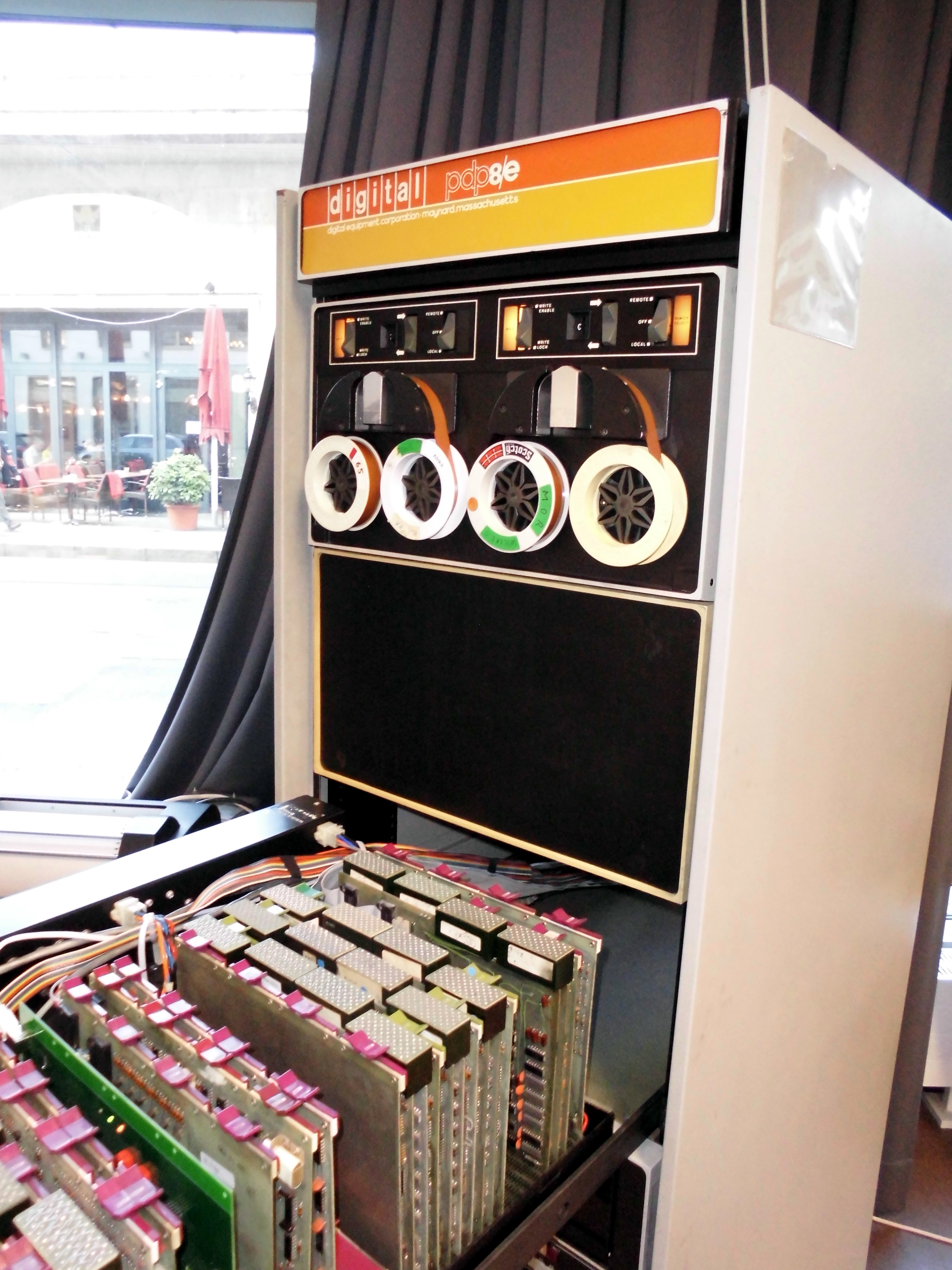|
Mitra 15
The Mitra 15 is a minicomputer made by the French company Compagnie internationale pour l'informatique, CII under Plan Calcul, along with the Iris 50 and Iris 80 mainframe computers. It was marketed from 1971 to 1985 and could function in conjunction with large systems. CII manufactured a thousand Mitra 15 machines until 1975 in its Toulouse factory, then in Crolles in the suburbs of Grenoble. A total of 7,929 units were built, most of them for the French market, with a small number sold in Australia, Indonesia, and in other European countries. History The Mitra 15 is the successor to the CII 10010, also called Iris 10, a 16-bit minicomputer released in July 1967. At the time, CII also produced another 16-bit minicomputer, the CII 10020 (actually a licensed Sigma 3 from SDS) and wanted to replace them both with a new, more powerful design compatible with the latest offering of the company. The Mitra 15 was designed from the outset to complement and network with the most powerful Fr ... [...More Info...] [...Related Items...] OR: [Wikipedia] [Google] [Baidu] |
Siris 8
Siris 8 is a discontinued operating system developed by the French company CII for its Iris 80 and Mitra 15 computers. It was later replaced by Honeywell DPS 7. Jean Ichbiah worked at CII on the rewrite of the Siris 7 operating system of the Iris 80 to create a more successful version, used to operate a three processor Iris 80 in Évry. The first version of Siris 8 offered full compatibility with applications running on its predecessor Siris 7.Siris 8 sur Feb Patrimoine, site de la Fédération des équipes de Bull Among its strong points were its excellent memory management, which took advantage of the extended virtual addresses [...More Info...] [...Related Items...] OR: [Wikipedia] [Google] [Baidu] |
PDP-8
The PDP-8 is a 12-bit computing, 12-bit minicomputer that was produced by Digital Equipment Corporation, Digital Equipment Corporation (DEC). It was the first commercially successful minicomputer, with over 50,000 units being sold over the model's lifetime. Its basic design follows the pioneering LINC but has a smaller instruction set, which is an expanded version of the PDP-5 instruction set. Similar machines from DEC are the PDP-12 which is a modernized version of the PDP-8 and LINC concepts, and the PDP-14 industrial controller system. Overview The earliest PDP-8 model, informally known as a "Straight-8", was introduced on 22 March 1965 priced at $18,500 (). It used diode–transistor logic packaged on Flip Chip (trademark), flip chip cards in a machine about the size of a small household refrigerator. It was the first computer to be sold for under $20,000, making it the best-selling computer in history at that time. The Straight-8 was supplanted in 1966 by the PDP-8/S, which ... [...More Info...] [...Related Items...] OR: [Wikipedia] [Google] [Baidu] |
Honeywell-Bull
Bull SAS (also known as Groupe Bull, Bull Information Systems, or simply Bull) is a French computer company headquartered in Les Clayes-sous-Bois, in the western suburbs of Paris. The company has also been known at various times as Bull General Electric, Honeywell Bull, CII Honeywell Bull, and Bull HN. Bull was founded in 1931, as H.W. Egli - Bull, to capitalize on the punched card technology patents of Norwegian engineer Fredrik Rosing Bull (1882–1925). After a reorganization in 1933, with new owners coming in, the name was changed to Compagnie des Machines Bull (CMB). Bull has a worldwide presence in more than 100 countries and is particularly active in the defense, finance, health care, manufacturing, public, and telecommunication sectors. History Origins On 31 July 1919, a Norwegian engineer named Fredrik Rosing Bull filed a patent for a "combined sorter-recorder-tabulator of punch cards" machine that he had developed with financing from the Norwegian insurance comp ... [...More Info...] [...Related Items...] OR: [Wikipedia] [Google] [Baidu] |
Ariane 4
The Ariane 4 was a European expendable space launch system, developed by the ''Centre national d'études spatiales'' (CNES), the French space agency, for the European Space Agency (ESA). It was manufactured by ArianeGroup and marketed by Arianespace. Since its first flight on 15 June 1988 until the final flight on 15 February 2003, it attained 113 successful launches out of 116 total launches. In 1982, the Ariane 4 program was approved by ESA. Drawing heavily upon the preceding Ariane 3, it was designed to provide a launcher capable of delivering heavier payloads and at a lower cost per kilogram than the earlier members of the Ariane family. The Ariane 4 was principally an evolution of the existing technologies used, as opposed to being revolutionary in its design ethos; this approach quickly gained the backing of most ESA members, who funded and participated in its development and operation. Capable of being equipped with a wide variety of strap-on boosters, the Ariane 4 gaine ... [...More Info...] [...Related Items...] OR: [Wikipedia] [Google] [Baidu] |



